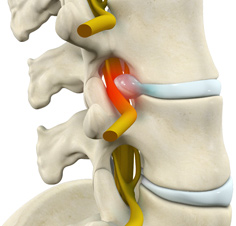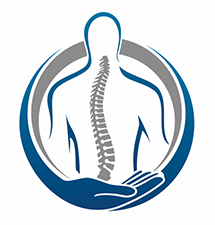Lumbar Radiculopathy

Back pain is a common condition affecting approximately 80% of the population at some point in their lives. The area usually affected is the lower back (lumbar region) as it bears most of the upper body’s weight. Pain in the lower back may sometimes radiate to the legs. This is referred to as lumbar radiculopathy or sciatica. Lumbar radiculopathy can be extremely debilitating and interfere with your daily activities.
To understand lumbar radiculopathy, you need to know a little about spinal anatomy. The spine consists of 33 vertebral bones stacked one on top of the other with cushioning disks lying between each vertebra. The lumbar region of the spine (below the rib cage) consists of 5 vertebrae. Nerves of the spinal cord in this region communicate with the lower body through spaces between the vertebrae. Trauma to the spine, age and overuse can result in deterioration of the vertebral bones and joints or bulging of the disks. The resultant loss of space can lead to compression of the spinal nerve roots. Depending on the area being supplied by the nerve, symptoms are experienced in the lower extremities.
Common symptoms include a sharp or burning pain that travels down one leg. Other symptoms include numbness, tingling and muscle weakness. Occasionally, leg pain occurs without the back pain. A thorough evaluation is necessary to identify your spine as the actual source of your pain.
Your symptoms and history are reviewed and a detailed physical examination is performed. If the pain originates in the spine, it usually follows a specific pattern of distribution that your doctor identifies and correlates with a particular spinal level or nerve root. Imaging studies are performed to confirm the diagnosis.
Most cases of lumbar radiculopathy are transient and can be treated by conservative methods such as rest, activity limitation, anti-inflammatory medications, spinal manipulation, spinal injections, physical therapy, specific home exercises and other modalities. A specific treatment plan is formulated to effectively relieve your symptoms and ensure a quick return to your regular activities. If symptoms are severe or persistent surgery may be recommended.







